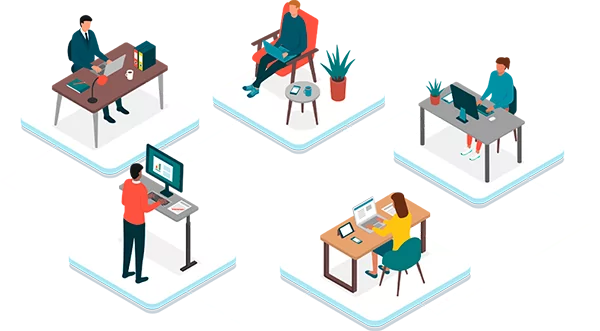In the ever-evolving landscape of technology, businesses often find themselves shackled to outdated systems, commonly known as legacy software. These systems, although functional, lack the capabilities to integrate with new technologies, posing a significant hindrance to business growth and operational efficiency.
The article aims to shed light on what legacy software modernisation entails, its benefits, challenges, and strategies for successful implementation.

TL;DR: Unlocking the Future of Legacy Software Modernisation
This comprehensive guide offers actionable insights for businesses looking to transition from outdated systems to modern platforms.
📝 Key Takeaways:
- Legacy software modernisation is essential for operational efficiency and staying competitive.
- The process involves various challenges, including operational disruptions and high costs.
- Careful planning, risk mitigation, and choosing the right modernisation strategy are crucial for success.
What Defines Legacy in Software Development?
In software development, a legacy system refers to outdated computer systems, programming languages, or application software that are still in use.
Legacy systems are often contrasted with modern systems that utilise current technologies and methodologies. While these older systems are still operational, they may not be efficient or optimal for current business needs. They are often built on technology that is no longer supported or that has been superseded by more efficient alternatives. The term “legacy” can also imply a system that is hard to update, maintain, or improve due to its age or complexity.
📊 Table: Common Characteristics of Legacy Systems
| Characteristic | Description |
| Outdated Technology | Often built on older technologies that are no longer supported. |
| Lack of Flexibility | Difficult to update or integrate with new systems. |
| High Maintenance Costs | Require significant resources to keep operational. |
| Limited Scalability | Cannot easily adapt to increased workloads or demands. |
How Do Legacy and Modern Software Systems Differ?
Legacy and modern software systems differ primarily in their technological foundations, scalability, and ability to integrate with other platforms.
Modern software systems are designed with current technologies that offer greater flexibility and scalability. They are often built on cloud-based architectures, allowing for seamless integration with other platforms and services. In contrast, legacy systems are rigid and limited in their ability to adapt to new technologies.
📈 Key Differences Between Legacy and Modern Software Systems
- Integration Capabilities: Modern systems are API-friendly, making it easier to integrate with other services. Legacy systems often lack this feature.
- User Experience: Modern systems prioritise user experience, offering intuitive interfaces and better performance.
- Security Measures: Modern software is built with current security protocols, whereas legacy systems may be vulnerable to newer types of cyber threats.
Cost Efficiency: Modern systems often reduce operational costs in the long run, while legacy systems can become increasingly expensive to maintain.

What Are the Benefits of Legacy Software Modernisation?
The benefits of legacy software modernisation include improved efficiency, scalability, and security, as well as reduced operational costs.
Modernising legacy software can bring about transformative changes for an organisation. One of the most immediate benefits is improved operational efficiency. By updating outdated systems, businesses can streamline workflows, automate repetitive tasks, and enhance overall productivity.
📊 Table: Benefits of Legacy Software Modernisation
| Benefit | Description |
| Efficiency | Streamlined operations and improved workflows. |
| Scalability | Ability to handle increased workloads without performance degradation. |
| Security | Enhanced security protocols to protect against modern cyber threats. |
| Cost Savings | Reduced maintenance and operational costs over time. |
Modernisation also allows for better scalability, enabling businesses to adapt to growing demands effortlessly. Security is another critical area that sees significant improvement, as modern systems are equipped with the latest security protocols to fend off contemporary cyber threats. Lastly, although the initial investment may be substantial, the long-term operational costs are often lower, providing a better return on investment.
Why Are Legacy Systems Still in Use?
Legacy systems remain in use primarily due to the high costs and risks associated with migrating to new technologies.
Despite their limitations, legacy systems are often deeply embedded in an organisation’s operations, making the transition to modern systems a complex and risky endeavour. The fear of operational disruptions during the migration process is a significant deterrent for many companies.
📝 Reasons for Continued Use of Legacy Systems
- Operational Dependency: Many businesses rely heavily on these systems for day-to-day operations.
- Financial Constraints: The cost of modernisation can be prohibitive, especially for small to medium-sized enterprises.
- Lack of Expertise: Companies may not have the technical skills in-house to manage a complex modernisation project.
- Risk Aversion: Concerns about data loss or operational disruptions during the transition.
The financial aspect cannot be overlooked either. Modernisation requires not only a substantial initial investment but also ongoing costs for training and maintenance. For these reasons, many organisations opt to continue using their legacy systems, despite the challenges and limitations they present.
Challenges and Risks in Legacy Software Modernisation
The challenges and risks in legacy software modernisation include operational disruptions, high costs, and potential data loss.
Embarking on a legacy software modernisation journey is not without its hurdles. One of the most significant challenges is the risk of operational disruptions. Transitioning from a legacy system to a modern platform may require downtime, which can impact business continuity.
📊 Table: Challenges and Risks in Legacy Software Modernisation
| Challenge | Description |
| Operational Disruptions | Potential downtime during the transition can affect business processes. |
| High Costs | Modernisation often requires a significant financial investment. |
| Data Loss | Risk of losing valuable data during the migration process. |
| Skill Gap | Lack of in-house expertise to manage the modernisation process. |
Another concern is the financial burden. The costs associated with modernisation can be substantial, including the price of new software, hardware, and training for staff. Data loss is also a significant risk, especially if the legacy system contains valuable or sensitive information. Lastly, a skill gap can exist in many organisations, requiring them to seek external expertise, which adds to the overall cost and complexity of the project.

Need Expert Guidance?
We provide fully managed end-to-end solutions for operators and service companies needing expert guidance.
Take advantage of our unique {SD:UK} CTO as a Service solution. Our experts help you to formally capture requirements, create a system specification and then fully manage the implementation of your project for a successfull delivery.


Strategies for Successful Legacy Software Modernisation
Successful legacy software modernisation strategies involve careful planning, risk assessment, and choosing the right modernisation approach.
The first step in a successful modernisation strategy is a comprehensive assessment of the existing legacy system. This involves understanding its architecture, dependencies, and the business processes it supports.
📝 Key Strategies for Successful Modernisation
- Assessment and Planning: Conduct a thorough review of the existing system and outline a detailed modernisation plan.
- Risk Mitigation: Identify potential risks and develop strategies to mitigate them.
- Choosing the Right Approach: Options include re-hosting, re-platforming, re-factoring, re-architecting, and replacing.
- Testing and Validation: Rigorous testing is essential to ensure that the modernised system meets all functional and performance requirements.
Once the assessment is complete, the next step is risk mitigation. This involves identifying potential challenges and developing strategies to address them. The choice of modernisation approach is also crucial; options range from simple re-hosting to complete replacement of the system. Regardless of the chosen path, rigorous testing and validation are essential to ensure that the modernised system meets all functional and performance requirements.Top of Form
How Does Legacy Modernisation Differ from Digital Transformation?
Legacy modernisation focuses on updating existing systems, while digital transformation involves a broader change in business processes, culture, and customer experiences.
While both legacy modernisation and digital transformation aim to improve business operations through technology, their scope and objectives differ significantly. Legacy modernisation is more focused and often involves updating or replacing specific outdated systems.
📊 Table: Differences Between Legacy Modernisation and Digital Transformation
| Aspect | Legacy Modernisation | Digital Transformation |
| Focus | Specific systems or technologies | Entire business operations |
| Scope | Limited to technological updates | Includes changes in culture and processes |
| Objective | Improve efficiency and reduce operational costs | Drive innovation and improve customer experience |
Digital transformation, on the other hand, is a more comprehensive approach that encompasses changes in business processes, culture, and customer experiences. It aims to drive innovation and improve the overall competitiveness of the organisation. While legacy modernisation can be a part of digital transformation, the latter is usually a more extensive and long-term initiative.


IT Outsourcing Done Right!
Outsourcing is no longer about just saving money, it is a strategic tool for accessing highly qualified experts to compliment your team and accelerate project delivery. The {SD:UK} team has an excellent track record for delivering high quality projects on time and on budget. Reach out to us for a free consultation with one of our experts.

What Are Some Examples of Legacy Software and Modernisation?
Examples of legacy software include old versions of Microsoft Windows and Oracle databases, while modernisation efforts often involve migration to cloud-based solutions.
Legacy software examples are abundant in various industries. For instance, many organisations still use older versions of Microsoft Windows or Oracle databases that no longer receive official support. On the healthcare front, outdated Electronic Health Record (EHR) systems are common.
📝 Examples of Modernisation Efforts
- Cloud Migration: Many companies are moving their legacy systems to cloud platforms for better scalability and flexibility.
- API Integration: Modernising by integrating APIs to improve functionality and interoperability.
- Platform Upgrades: Updating the underlying platform to a newer version to gain performance improvements and new features.
- Data Analytics: Incorporating data analytics tools to make better use of the data stored in legacy systems.
Modernisation efforts vary depending on the needs and constraints of the organisation. Cloud migration is a popular strategy, offering benefits like scalability and cost-efficiency. API integration is another common approach, especially for companies looking to improve the functionality and interoperability of their existing systems. Platform upgrades and the incorporation of data analytics tools are also prevalent modernisation strategies.
What is the Difference Between Legacy Software and Cloud Computing?
The primary difference between legacy software and cloud computing lies in their deployment and scalability. Legacy software is often on-premises and rigid, while cloud computing offers flexibility and easy scalability.
Legacy software systems are usually deployed on-premises, meaning they run on hardware located within the organisation. This setup often results in higher maintenance costs and limited scalability.
📊 Table: Differences Between Legacy Software and Cloud Computing
| Aspect | Legacy Software | Cloud Computing |
| Deployment | On-premises | Cloud-based |
| Scalability | Limited | Highly scalable |
| Maintenance | Requires in-house expertise | Managed by service provider |
| Cost | High upfront and maintenance costs | Pay-as-you-go model |
Cloud computing, on the other hand, is hosted on remote servers managed by third-party providers. This model offers significant advantages in terms of scalability and cost-efficiency. Businesses can easily scale their operations up or down based on demand, and they only pay for the resources they actually use. Moreover, maintenance is generally taken care of by the service provider, reducing the burden on in-house IT teams.
Unlocking the Future: The Imperative of Legacy Software Modernisation
Legacy software modernisation is a crucial undertaking for organisations looking to stay competitive in today’s rapidly evolving technological landscape.
The process involves various challenges and risks but offers substantial benefits, including improved efficiency, scalability, and security. By carefully planning and choosing the right modernisation strategy, organisations can successfully transition from outdated legacy systems to more flexible and robust modern platforms.
📝 Key Takeaways
- Legacy software modernisation is essential for operational efficiency and competitiveness.
- The process involves challenges like operational disruptions and high costs.
- Careful planning and risk mitigation are crucial for successful modernisation.
The journey from legacy to modern systems is complex but ultimately rewarding, offering organisations a path to improved operational efficiency, reduced costs, and enhanced competitiveness.
Further Reading
For those interested in diving deeper into the subject, the following resources offer valuable insights:
📚 Books
- “Modernizing Legacy Systems: Software Technologies, Engineering Processes, and Business Practices” by Robert C. Seacord
- “Refactoring: Improving the Design of Existing Code” by Martin Fowler
🌐 Online Resources
- https://www.gartner.com/smarterwithgartner/7-options-to-modernize-legacy-systems
- https://en.wikipedia.org/wiki/Software_modernization
Frequently Asked Questions
Application modernisation is the process of updating an application so it can take advantage of modern computing technologies and practices.
No, legacy software isn’t inherently bad; it may still meet the needs for which it was designed but may lack features and security measures found in modern software.
The timeline varies depending on the complexity of the legacy system and the scope of the modernisation effort. It can range from a few months to several years.
Code refactoring is the process of restructuring existing computer code without changing its external behaviour, often to improve its readability or performance.
Microservices are a software architecture style where complex applications are composed of small, independent processes that communicate with each other using APIs.
Look for expertise in your industry, a proven track record in software modernisation, and a methodology that aligns with your business needs.
The API economy refers to the set of business models and practices built around the use of APIs in today’s digital economy, often seen as a facilitator for modernisation.
Yes, containerisation can simplify the deployment of applications, making it easier to manage and scale modernised systems.

